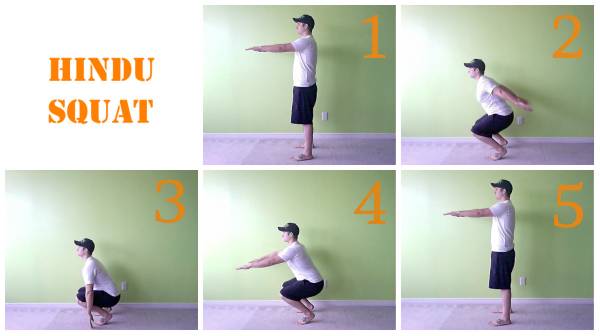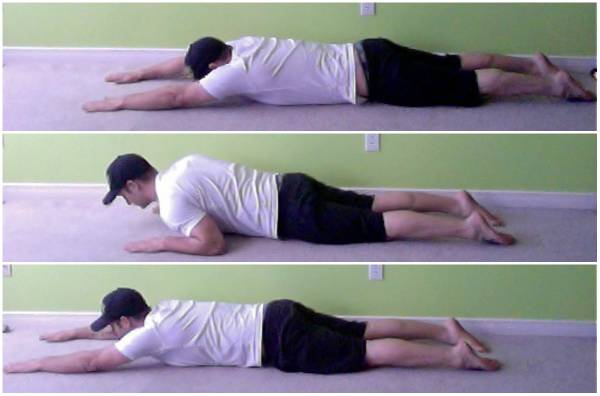The world of fitness is fast paced, ever changing, and quickly growing. We’re always seeking the newest, brightest, and most recent programs and techniques. But what if you went in the other direction? What if we looked to the past for inspiration?
The past is flooded with a bunch of ridiculous contraptions, methods, and exercises that have died off for the better. However, there is also a wealth of fantastic exercises just waiting to be rediscovered and implemented in more modern methods.
Sure, there are uses for this equipment, but is this what exercise is meant to look like?
For those of you who don’t know, I’m a minimalist in just about every sense. My workouts are no different. I keep them simple, bodyweight based, and effective. But that doesn’t mean I don’t like to keep things interesting and fun.
Today, I’m going to shine some light on four exercises that have roots deep in the past. But each one has stood the test of time and is in desperate need of having the dust blown off them. Each one of these exercises is dynamic – they’ll improve your strength, flexibility, and mobility through wider ranges of motion than in typical exercises. On top of that, each exercise will challenge your mind to adapt to new movement patterns and improve your overall athleticism.
The Half Moon Push Up
Half moon push ups are popular among grapplers and jiu jitsu players. They help with preventing strains and injuries to the ribs, as well as developing strength through a greater range of motion.
“Remember: just because something’s old, doesn’t mean it can’t feel new.”
Start in a bear squat position with your arms fully outstretched, hands shoulder width apart, feet hip width apart, and your knees bent with your butt close to your heels.
Keeping your body low to the ground, pull yourself through your hands in a pull up motion. At the same time turn your knees and torso out toward the left. This should put more weight onto your right hand. Once your chest is in line with your shoulders and palms, begin to shift little more weight to the left hand and turn your knees and torso out to the right side.
Once you are fully facing the right side, begin to push yourself backward and turn your torso/knees back to the starting bear squat position. Alternate the side you turn toward while initiating the push up each time. For example, we turned to the left to start the rep described above, so we would perform the next rep by turning to the right.
This push up should be performed in one smooth and seamless motion as if your chest is tracing a semi circle across the floor. This is where this push up derives its name, “half moon.”

Hindu Squats
Hindu squats or bathaks, along with Hindu push ups, are a staple conditioning exercise used by Hindu wrestlers for centuries. In fact, the Great Gama, a legendary wrestler who was undefeated in over 5,000 matches, was said to have performed over 4,000 Hindu squats each day. Unlike regular squats, Hindu squats force the knee well over the toes. This technique is not recommended for anyone with knee injuries.
“The entire squat should be controlled and you should never drop down quickly.”
Begin in a standing position with your feet hip width apart. Your stance should not be quite as wide as during a regular squat. Begin to squat down with your weight on the balls of your heels, allowing your knees to pass over your toes.
As you lower, keep your back straight and head up, and let your arms swing out behind you with your fingers extended. Continue to lower yourself all the way down until your butt almost touches your heels. At the bottom of the squat, your fingertips should brush the ground right beside your feet.
Keeping the weight on the balls of your feet, press through the ground, begin to extend from the knees and hips, use the momentum from your arms and swing them up and in front of you in coordination with the extension of your knees and hips. Stand up fully, and then repeat.

Remember to keep your torso, back, and chin up through the whole movement. The entire squat should be controlled and you should never drop down quickly. The swinging of your arms should be soft and natural. If at any time you feel pain in your knees or low back, stop performing the squat.
Dead Man’s Crawl
The dead man’s crawl is a unique vertical pulling exercise and core strengthening technique. Unlike most vertical pulls, it doesn’t require a pull up bar or rings. I first came across this movement during my childhood where it was used heavily during workouts in my martial arts classes.
Start laying face down on the floor with your arms stretched out fully overhead and shoulder width apart. Your legs should be straight, hip width apart, and toes pointed. Keep your spine flat and avoid pulling your head up and back.
Press your palms, forearms, and elbows deep into the floor. Flex from your abs, low back, glutes, and calves and keep your toes pointed hard. At the same time, keeping your fingers outstretched, pull yourself forward and keep your whole body on the ground.
Continue to pull yourself forward until your elbows are at the sides of your ribcage. Then, extend your arms over head, place the arms on the floor with your palms flat on the ground, and repeat for as many reps as prescribed.

The Archer Squat
This is a unique squat that improves your balance, coordination, and lower-body flexibility. It forces one leg to do the majority of the work in terms of lowering the body and maintaining balance, while at the same time the other leg is having its flexibility tested and improved dynamically.
“Start to bend the right knee, hinge at the hips, and lower yourself, keeping your weight resting right through the right heel and the left knee straight with your left foot pointing up into the air.”
Start with your feet spaced outside of shoulder width. Raise your left foot off the ground so your weight is resting on the heel and your toes are pointed up into the air. The right foot should be firmly planted on the floor with the weight distributed primarily through the heel.
Start to bend the right knee, hinge at the hips, and lower yourself, keeping your weight resting right through the right heel and the left knee straight with your left foot pointing up into the air. Keep a natural curve in the spine, don’t allow your bent knee to pass too far over the toes, and sit into the heel. Extend your left arm out to the side, pointing your fingers away from the body.
Only lower yourself down as far as possible without discomfort in the extended hamstring, and don’t allow your extended knee to bend. Once you have reached this point, press through the right heel, extend the right knee, and stand back up to the starting position. Then perform your next rep on the opposite leg. Keep alternating sides with each repetition.

The Workout
First, warm up with basic joint mobility and 3-5 minutes of jump rope.
Then, the workout will consist of running through the exercise circuit shown below for a total of four rounds. You’ll perform all four of the rounds back-to-back without any rest. Each exercise will be performed in the order shown, also back-to-back without any rest.
Exercise Circuit:
- Half Moon Push Ups
- Hindu Squats
- Dead Man’s Crawl
- Archer Squats
Round 1 – Each exercise will be performed for 1 min
Round 2 – Each exercise will be performed for 45 seconds
Round 3 – Each exercise will be performed for 30 seconds
Round 4 – Each exercise will be performed for 15 seconds
So, round one is one minute of non-stop half moon push ups, one minute of Hindu squats, one minute of dead man’s crawl, and one minute of archer squats. Then, without stopping, you move on to round two and do each exercise for 45 seconds.
Old Exercises for a New Challenge
There you have it, four of my favorite “ancient” exercises all rolled up into one little workout. Give these old exercises a try for a new challenge. Remember: just because something’s old, doesn’t mean it can’t feel new.
Check out these related articles:
- 4 Bodyweight Squat Variation
- 36 Weeks of Bodyweight Workouts
- No Equipment Needed – 9 Bodyweight Workout Programs and Training Articles
- What’s New On Breaking Muscle Today
Photo 1 courtesy of Shutterstock.






